Hiend-audio.com’s Ziggy “Cheetah” MK II AC Power Cord
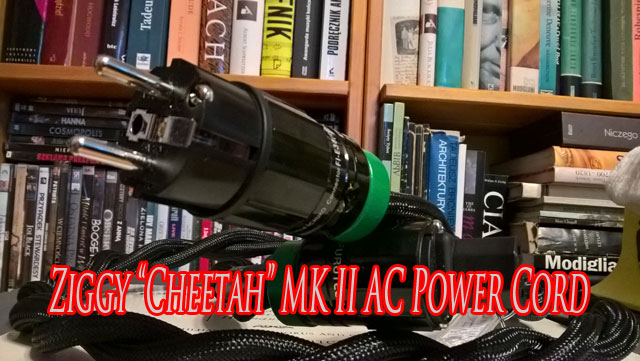
 I can’t say I knew about Ziggy prior to this review… and I’m not sure I know much more after digging into Ziggy at his site Hiend-Audio.com. but you gotta love a guy who admits “That site of mine is one big hell of a mess. It used to be a DIY site, actually, long since not very much in use since I started fiddling with the Ziggy cables.” We’ll forgive the mess… creative people often work best in what appears to others as chaos. Changing a DIY site to one for commerce takes time.
I can’t say I knew about Ziggy prior to this review… and I’m not sure I know much more after digging into Ziggy at his site Hiend-Audio.com. but you gotta love a guy who admits “That site of mine is one big hell of a mess. It used to be a DIY site, actually, long since not very much in use since I started fiddling with the Ziggy cables.” We’ll forgive the mess… creative people often work best in what appears to others as chaos. Changing a DIY site to one for commerce takes time.
A click on the “About” tab revealed a bit of information about him: “Some time ago I got infected by “Audiophilia Nervosis”, a disease, that indeed, cannot be cured. Once upon a time I accidentally listened to a specific “good sounding system” …. and that was the start of all my present day audiophile-problems. I wanted my sound to sound like THAT Sound. Hence, the a never ending story has begun. On a never ending journey. Once you step onto this path, you quickly come to a point of no return. And believe me – you cross this point of no return without any hesitation. YOU HAVE BEEN WARNED!”
Ziggy proudly states that, by now, he has constructed nearly the entire signal path of his DIY audio system all by himself. While I haven’t accomplished much of my own signal chain, I know this disorder and it is indeed easily transmitted. I myself built my own first hi fi speakers and have continued over the years to tinker with turntables, tonearms and accessories. Having my very own in-house 3-D printer has increased the likelihood that this disorder is indeed incurable and, like Ziggy, I come up with ways to DIY myself from project to project. I enlist the help of a couple of knowledgeable friends now and again, for their ears and abilities but, much of what I attempt, like Ziggy, is self-made… and, not to worry, my friends were already infected years ago.
Like Ziggy says: “This is an ongoing process. You learn. You build. You Fail. You learn from your failure. You Build again. You Succeed. You cry of joy. You listen and you SEE. Then something explodes. …. Oooops!” What I have in my possession is one of Ziggy’s Cheetah” MK II AC cords. Hand built in Poland, this sturdily constructed, twisted cable measures approximately 1.9 meters end to end, give or take a few cm’s due to the twisting. It is terminated with a Furutech FI-28(G) male IEC on one end and a Furutech FI-28M(G) 3-prong plug on the other for the US market. There are other termination options available, including a “Schuko” type available in the EU.
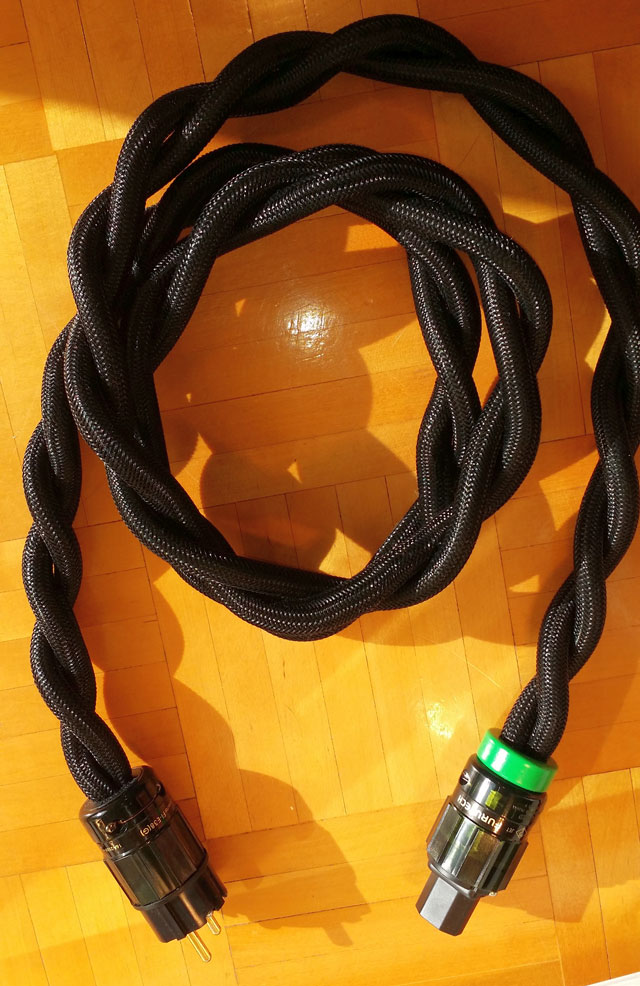
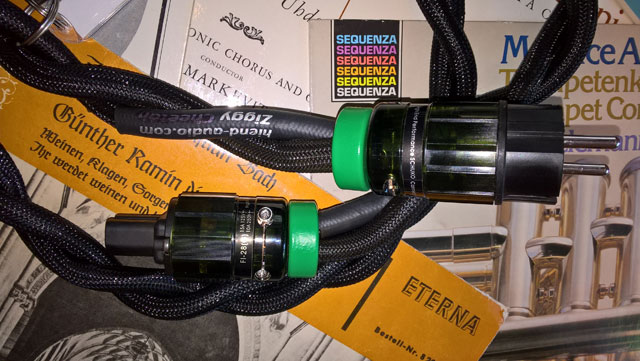
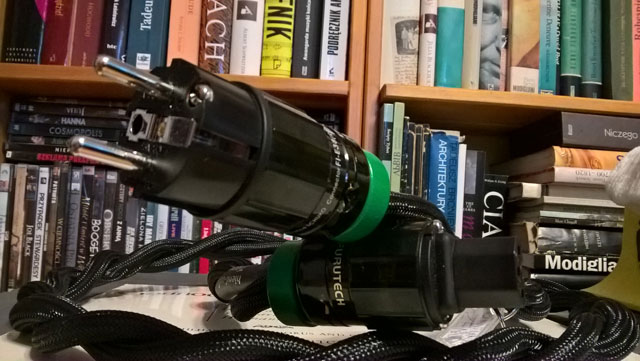

The cable is nicely labeled along the length “hiend-audio.com – Ziggy Cheetah” and a serial number (this one says S/N: 295). This cable is heavy, understated, and surprisingly flexible. The hiend-audio.com site states: “The “Cheetah MK II” is technologically more advanced as compared to the traditional “Cheetah” of the earlier days – To quote Ziggy: “In comparison to the earlier ones, this one is made of better quality (higher purity) conductors.”
The Whole “Schuko” thing
In the EU, Ziggy offers a “Schuko” variation of his plugs, explaining: “The whole “Schuko” thing is more of a geography-specific thing. It applies to the EU, but probably does not apply for the geography of the USA, where you do NOT have the freedom to interchange live with neutral, due to specific design of US wall sockets.” In the EU, they use a 2-plug system, much like our pre-polarized plugs, where audio lovers can plug in two ways to see which way sounds best to them.
“Hey, one more thing.”
A subsequent email from Ziggy in where he writes: “That whole discussion about “polarity” and “Schuko” wall sockets does not apply to the US geography. Your safety standard system and the non-ambiguous design of your wall sockets does not allow for any freedom in this respect. The specific US versions of the Cheetah MK II cables, as provided for testing, are wired according to your code, which by the way just so happens to coincide with the “golden screw to golden screw for the Live conductor” rule of mine. So no problems here. Best Regards, Ziggy.”
Ask a Simple Question and…
I asked Ziggy if he could give me insight on how his cable is constructed, a touchy subject because, in giving a bit too much info, it would allow competitors to reverse engineer his designs… Ziggy’s response follows:
“Indeed, I am acutely aware that you do “need” to write “something” about this. Let me say the following. Ziggy AC Power Cables are not just yet another cable brand that cuts a length of material off a big roll of cable and appends a pair of plugs to it. Ziggy AC Power Cables strive to deliver quick, unrestricted and clean energy to the load. This seemingly simple task is actually comprised of somewhat conflicting design goals. It is not an easy feat to deliver all three of the above at the same time.
Traditional cables are about traditional compromises. Ziggy AC Power Cables are slightly different. The main conductors are optimized in such a manner so as to achieve delivery of clean energy to your audio devices. In unrestricted amounts. And Fast. Clean, as in free from excessive noise, which is abundant in present day energy networks. Just think about all those Switch Mode Power Supplies, all those LED light bulbs, all those inverters, that raise havoc whilst imprinting their noise on the should-be-but-is-not sine wave, that you get from your wall outlet.
Alas, traditional techniques of noise limiting are an double-sided sword. The more filtration you apply, the “slower” the cable becomes. Special design approach is used in the Ziggy AC Power Cables, such that actually allows to achieve a fair amount of noise limiting, but without loosing on the dynamics of the product.
 The term Cheetah – actually refers to an animal. A very fast animal. Probably the fastest land mammal on Earth, capable of achieving astonishing speeds, when it starts to run. Engineers will cry “Blasphemy!!!”. There is no such thing as fast or slow cables. Electricity flows with a known speed, the value of which you can find it in standard text books. OK, OK …. But there ARE differences in the way an audio system sounds, when hooked up by various types of power supply cables. And indeed, there are people out there, who hear such differences. Differences in the dynamics of the music being presented. The Ziggy Cheetah strives to maintain as much of these dynamics as possible, but at the same time, to cut down the ingress of noise into an audio system.
The term Cheetah – actually refers to an animal. A very fast animal. Probably the fastest land mammal on Earth, capable of achieving astonishing speeds, when it starts to run. Engineers will cry “Blasphemy!!!”. There is no such thing as fast or slow cables. Electricity flows with a known speed, the value of which you can find it in standard text books. OK, OK …. But there ARE differences in the way an audio system sounds, when hooked up by various types of power supply cables. And indeed, there are people out there, who hear such differences. Differences in the dynamics of the music being presented. The Ziggy Cheetah strives to maintain as much of these dynamics as possible, but at the same time, to cut down the ingress of noise into an audio system.
Their constructor, Ziggy, tries to achieve this by using a wide myriad of small little differences. Each of them – seemingly insignificant. Small little details. Each and every one of them, when taken separately – probably unnoticeable in terms of final perceptions. So it is rather the synergy of a vast amount of small little details, that Ziggy hopes will make a difference. Little details regarding purity of the conductors, differences in the type of insulation, type of braiding, additional small elements on the way, as well as even the way the plugs are assembled. Attention to every detail. In hope of delivering a better sound. Mainly for myself. And as it gradually turned out, also for others.”
Way Early Listening
I plugged the cable in to power an amplifier for break in over the next week or two but ,just days later, got a text from CP asking what I thought of the cable. I traditionally try not to form any opinion prior to a detailed listening session after break-in and hadn’t yet researched the maker or product, but played some rips and made some notes in an effort to answer his request. I noted the following in a text:
“New cable is shinier, like it’s silver… detailed, [Gregory] Porter’s voice didn’t have that honey body on When Love Was King. Brought out details of acoustic bass on Avishai Cohen’s On A Black Horse/ Linearity and there was a lot of energy to the strings and woodwinds. A lot of punch and high frequency detail. Parts of that I thought was sort of shrill… given time, probably the right cable for [warm components].” As I got farther into listening, with a greater variety of music played, I wrote:
“Still a bit forced or stressed… vocal on When Love Was King was thin and edgy…. is there silver-plated or solid silver? Metheny and Haden’s The Moon Is A Harsh Mistress had more of a top end zing than I’ve heard.
 Avishai Cohen’s On A Black Horse/Linearity was detailed, great soundstage, not compressed, punch, nice body to instruments, upright bass has great body, wood and presence. Outstanding. My neighbor just texted and asked me what song I was just playing… Transients tight, fast and a touch accented.” I then swopped the Ziggy for my Oyaide GPX-R V2 power cable and played the same tracks: Moon Is A Harsh Mistress has greater harmonic richness to my ear, less zing and it’s perhaps a touch hooded. On the Cohen tune – coherence to string passage, deep bass, rolled back in comparison, less high frequency info. Bass appears to have the same power but not as tightly rendered, less shiny, much less detail about instrument anatomy.” Well, that was an interesting comparison. The Oyaide’s do a very good job… but Ziggy’s cable did a near MRI on the body of that acoustic bass.
Avishai Cohen’s On A Black Horse/Linearity was detailed, great soundstage, not compressed, punch, nice body to instruments, upright bass has great body, wood and presence. Outstanding. My neighbor just texted and asked me what song I was just playing… Transients tight, fast and a touch accented.” I then swopped the Ziggy for my Oyaide GPX-R V2 power cable and played the same tracks: Moon Is A Harsh Mistress has greater harmonic richness to my ear, less zing and it’s perhaps a touch hooded. On the Cohen tune – coherence to string passage, deep bass, rolled back in comparison, less high frequency info. Bass appears to have the same power but not as tightly rendered, less shiny, much less detail about instrument anatomy.” Well, that was an interesting comparison. The Oyaide’s do a very good job… but Ziggy’s cable did a near MRI on the body of that acoustic bass.
Ziggy Comments
I shared that let MRI comment while corresponding with Ziggy and received this response “I hope that the bass body does not dominate with authority too much. Indeed, some smaller vacuum tube amplifiers can actually benefit from this effect, because the vacuum tubes tend to “round up” and trim the frequency response at the lower end of the audio band. When a Ziggy Cheetah provides power to a small vacuum tube amplifier, especially of the SET variety, often one may get the impression that the amplifier behaves as if it had more power, more kick, more spontaneous slam. Obviously, this is just my opinion and opinions from some guys over here. Yours might turn out to be totally different.
Differences may be dramatic, due to the vast difference in voltages. Here in Europe, we have 230VAC. That means that when powering a 1,15 kW beast, you only need to provide 5A or RMS current. In the USA, with 115V AC, the same power beast actually implies twice as high current carrying needs: 10A.
Indeed, in some systems, and / or in some listening venues that are not appropriately damped with sofas, cushions, carpets, etc, you may get a feeling that the room actually resonates and “plays with the system”, strengthening certain low notes and general bass perception.”
After a week or so, I started researching: According to Ziggy’s site, “The Cheetah MK II is a universal audio power supply cable, but it is ‘best loved’ in the context of providing power to the central power distribution unit, as well as for powering various ‘power hungry’ devices, such as: high-powered amplifiers (silicon based, tube based) and or mono-blocks (some people also like to use these cables to power up pre-amplifiers and DAC’s).
Later Listening
A couple of weeks into break in I was ready to listen to those tracks again, along with some others… or so I thought. Once I had the first version of this article in the can, I contacted Ziggy, who told me a good break in starts at 100 hours and should extend for far more time. With that in mind and without that sort of time, I continued on, aware that there would be further improvements over time… long after this cable has left my hands.
I moved the Cheetah MK ll over to my Opera Consonance M100SE 40wpc tube integrated, currently fitted with EL34 power tubes, and set up a digital source and played through the Tekton Double Impacts as before.
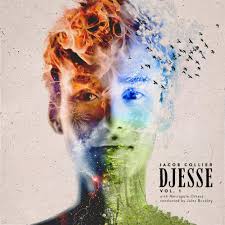 Jacob Collier’s two full length 2019 releases, “Djesse Vol. 1” (Decca (UMO) 2018) and “Djesse Vol. 2” (Decca (UMO) 2019), have been on repeat of late and are always a great place to start. Home Is, from “Djesse Vol. 1” was first up. The rig reached down deep for the lowest dense cinematic bass, offering a good, solid soundstage and vocal imaging. On “Overture,” this cable handled the thematic wallops and dense program material, rending an intimate and pleasing view into the busy mind of this 22 year old musical phenom. With The Love In My Heart was complex, fun and foot-tappingly danceable. This Ziggy “Cheetah” MK II AC Power cable surprised me. No, shocked me. The shininess I heard was gone, replaced with seemingly endless punch, density and dynamic complexity. On Ocean Wide, Canyon Deep, The bass line was rendered with a real physical sense of that instrument’s body, The strings were lush, and delicate cues and nuances light and airy, like butterflies fluttering about the room. Such a pleasing depth to this detailed mix. As the waves of lyric and melody rolled in, this cable managed to impart a solid realism in depth.
Jacob Collier’s two full length 2019 releases, “Djesse Vol. 1” (Decca (UMO) 2018) and “Djesse Vol. 2” (Decca (UMO) 2019), have been on repeat of late and are always a great place to start. Home Is, from “Djesse Vol. 1” was first up. The rig reached down deep for the lowest dense cinematic bass, offering a good, solid soundstage and vocal imaging. On “Overture,” this cable handled the thematic wallops and dense program material, rending an intimate and pleasing view into the busy mind of this 22 year old musical phenom. With The Love In My Heart was complex, fun and foot-tappingly danceable. This Ziggy “Cheetah” MK II AC Power cable surprised me. No, shocked me. The shininess I heard was gone, replaced with seemingly endless punch, density and dynamic complexity. On Ocean Wide, Canyon Deep, The bass line was rendered with a real physical sense of that instrument’s body, The strings were lush, and delicate cues and nuances light and airy, like butterflies fluttering about the room. Such a pleasing depth to this detailed mix. As the waves of lyric and melody rolled in, this cable managed to impart a solid realism in depth.
With another play of On A Black Horse/Linearity from Avishai Cohen’s “Almah” (Parlophone (France) 2013), all has changed – this complex piece offered up great textures in its brevity. There was a solidity and drive, joined by focused imaging and powerful bass and great body to the keyboard, The delicate cymbal work offered counterpoint to the dynamic happenings captured here. Petite Kid Everett from Conjure’s “Cab Calloway Stands In For The Moon,” (American Clavé 1988) had weight, focus and snap. Amulet from Paul Simon’s “So Beautiful Or So What” (Concord Music Group 2011) was captivating, his guitar’s body rendered with a great, bold voice and presence. No shy playing here – a surety of movement beautifully rendered.
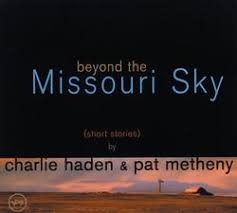 A replay of The Moon Is A Harsh Mistress from Charlie Haden and Pat Metheny’s “Beyond The Missouri Sky (short stories)” (Verve/Polygram Records 1997) presented a guitar as delicate as the bass was commanding, with Haden offering deep yet gentle support to Metheny’s guitar melody. The nuanced background accompaniment was subtle as it quietly wrapped itself around these two jazz stars, who played with such familiarity that was easy to forget just how stunningly gifted they each were then. Haden has, sadly, since passed.
A replay of The Moon Is A Harsh Mistress from Charlie Haden and Pat Metheny’s “Beyond The Missouri Sky (short stories)” (Verve/Polygram Records 1997) presented a guitar as delicate as the bass was commanding, with Haden offering deep yet gentle support to Metheny’s guitar melody. The nuanced background accompaniment was subtle as it quietly wrapped itself around these two jazz stars, who played with such familiarity that was easy to forget just how stunningly gifted they each were then. Haden has, sadly, since passed.
The Wrap
I really liked the Ziggy’s Cheetah MK ll Power Supply Cable on my tube integrated. Its delivery of power provided both nuanced and dynamic contrasts in resonance, textures and instrument tone beautifully and there were details presented that were not as evident when using my Oyaide cables. The Cheetah MK ll is a highly competent performer worthy of your time. Good job, Ziggy, (but then you already know that).


greg voth
Specifications:
Ziggy “Cheetah” MK II – A Power Supply Cable For Audio
Retail: $1100US
Based on 2 x 16mm2 + PE conductors
Standard Length: c.a. 1,9 meters
Plug: Furutech FI-38(G)
IEC Plug: Furutech FI-28(G)
(Schuko Plug Furutech FI-38(G) available in the EU)
Contact:
Zygmunt (“Ziggy”) Jerzynski
Website: www.Hiend-Audio.com
Email: zjj_wwa AT hiend-audio DOT com
Technical Stuff:
The Cheetah MK II is based on 2 x 16mm2 (~= almost 2x 5 AWG) leads. A separate protective earth lead is also included. The current carrying capability of the product is actually limited not by the cable, but by the limitations of the power plugs, which are normally rated at 10 to 16A at 115 VAC.
For a standard length of 1,8 meters, (such as the cable reviewed here):
Capacitance between Live and Neutral: 110 pF
Capacitance between Live and Protective Earth: 93 pF
Capacitance between Neutral and Protective Earth: 143 pF
The inductance of Live – Neutral (closed loop): 6nH
All of above may stray a few percent either way.
As for insulation of the material that is used for the L, N leads, it goes way above 1000V DC, continuous mode. And withstanding 5000 Volts during a standard limited time safety test.
In terms of current handling capability, the product is “limited” by the performance specifications of the actual power plugs: 10 A / 250V.
Stereo Times Masthead
Publisher/Founder
Clement Perry
Editor
Dave Thomas
Senior Editors
Frank Alles, Mike Girardi, Russell Lichter, Terry London, Moreno Mitchell, Paul Szabady, Bill Wells, Mike Wright, and Stephen Yan,
Current Contributors
David Abramson, Tim Barrall, Dave Allison, Ron Cook, Lewis Dardick, John Hoffman, Dan Secula, Don Shaulis, Greg Simmons, Eric Teh, Greg Voth, Richard Willie, Ed Van Winkle, Rob Dockery, Richard Doran, and Daveed Turek
Site Management Clement Perry
Ad Designer: Martin Perry







Be the first to comment on: Hiend-audio.com’s Ziggy “Cheetah” MK II AC Power Cord